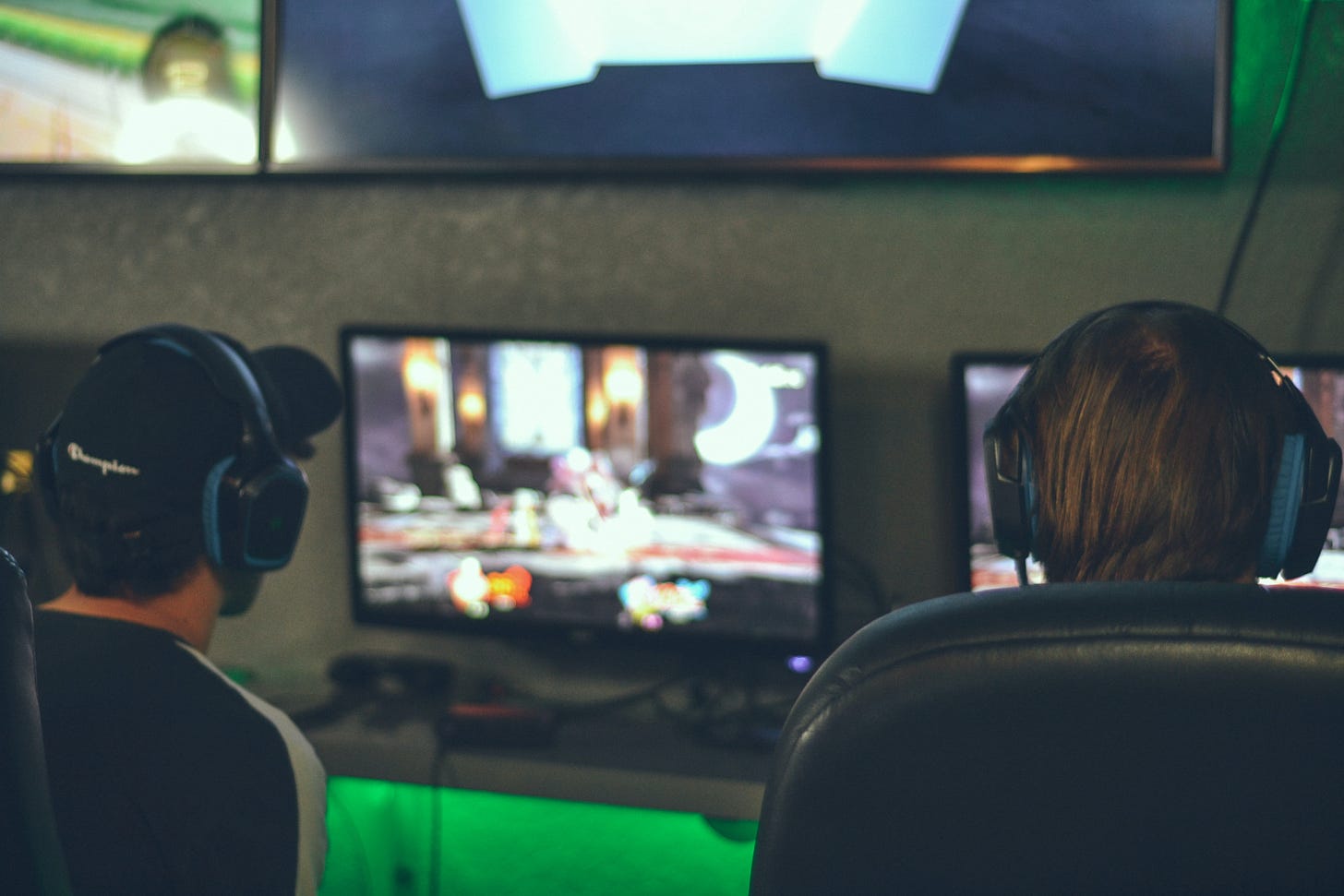Video Games & Design
How are we intentionally designing addiction into the consumption of our technology?
Before I begin writing this week's content, I want to thank the new group of subscribers who have joined me in my explorations centered around design, sustainability, technology, and innovation, among other things. I hope you find value in joining me on this journey, and I am grateful for your support!
Reading has always been a vital pillar in my growth as a human. From time to time, I become particularly obsessed with a book that I consider life-changing or profoundly moving. The first book that had this impact on me was "The Hobbit," followed closely by "The Lord of The Rings." I remember eagerly going through the modern art book I purchased for an art history class, as well as my first books on typography and design. Later, I discovered "Creative Strategy and the Business of Design," which introduced me to design beyond the aesthetic. Eventually, I came across "Sprint," the book that transformed my career and practice and is a significant reason why I can write this weekly newsletter.
The latest book I've read that falls into the life-changing category is titled "The New Designer: Rejecting Myths, Embracing Change." I believe this book has encouraged, validated, and revitalized my passion for strategic & service design at a time when I needed it most. A particular story told at the beginning of one of the book's chapters brought me to tears.
In this chapter, the author describes a situation where a young man was struggling with severe video game addiction to the point where maintaining relationships and his health became a challenge. This story brought me to tears because... it resonated with my own experience.
When the pandemic hit in 2020, I used it as an excuse to seek refuge in video games. I was gaming for 8 hours a day, 7 days a week, starting immediately after work and continuing until almost midnight, finally stopping to go to bed so I can function at work the next day. I lost touch with my family and friends, and it's evident that my health suffered significantly due to this addiction.
Fortunately, I found a way to break free from this addiction and have begun leading a healthier life. But you might be wondering: Why is video game addiction being discussed in a design book and a blog related to design? You might already know the answer. Video game and screen addiction, as a whole, is deliberately designed.
Designers within the video game industry are intentionally tasked with creating features that increase quantitative engagement metrics. Often, little to no attention is given to the potential psychological consequences when making design decisions that are related to building these features.
Designing screen addiction is just a symptom of a larger problem that goes well beyond the video game industry. Many designers aren't designing for people; they're designing for businesses so that companies can manipulate people into engaging in activities that boost profits.
I'm not here to express anti-capitalist doctrines. I'm not against businesses growing and making money. However, I am against businesses growing at the expense of people and the planet. I also understand that many designers working for companies that might use exploitative design strategies might feel trapped and helpless. The realities of paying rent, putting food on the table, and using money to lead a comfortable life are significant considerations, and I empathize with the fear of losing a job while attempting to drive change within a company. That being said, perhaps we can explore ways for designers to feel more empowered to effect change within their teams and organizations.
Start by asking questions - Believe it or not, I remain optimistic about the state of design to the extent that I believe most designers and the people they work with have good intentions and want to do well. Therefore, I believe that asking questions related to addiction, interactions, and ethics could help your colleagues see a product or service being designed in a new light, potentially sparking change.
Here are some questions you can ask:
“Are we encouraging healthy usage patterns?”
“Are we encouraging offline interactions?”
“Are we prepared to make changes based on ethically focused insights and considerations?”
Advocate for qualitative design research - If questions don't work, perhaps because the individuals you're working with aren't as altruistic as we naively hoped, try the show-don't-tell approach. Maintain hope that sharing real stories about the addictive behaviors that design causes might be what's needed to awaken the hearts and minds of your colleagues.
Find business reasons to reduce addictive designs - If neither questions nor research prove effective, we know that anything endangering a business's health should capture attention. Delve deep into your company's business model and practices to uncover ways in which healthy, non-addictive design could benefit the business. Here are some examples of areas to explore when making the case for avoiding addiction tactics in design:
Maybe less addictive design will increase customer trust and loyalty.
Maybe less addictive design will lead to more meaningful engagement.
Maybe less addictive design will help us differentiate ourselves in the market.
Update your portfolio and/or resume - If none of these strategies yield results, it might be time to consider seeking a job that at least partially aligns with the idea of creating less addictive designs. I understand that this might not be what you wanted to read, and again, job security is relevant (especially in the United States). I'm not suggesting you quit your job immediately, but keep your eyes open for positions offered by companies that uphold proper design ethics.
This is not a new topic in the design industry, and fortunately, many designers are writing and speaking about the perils of addictive design. If you're curious to learn more, you can start with the book I mentioned at the beginning. You can also watch "The Social Dilemma". I look forward to witnessing your future designs and hoping that whatever you create provides opportunities for individuals like me to avoid addictive behaviors while promoting healthier relationships with our technology.
My favorite things of the week:
I felt that this business idea related to unplugging and digital detox would be relevant to share this week.
I found this visual on systems thinking super illuminating as I explore ways to think more systematically when I do the work that I do.
Here’s a short breakdown on one of my favorite design exercises: Crazy 8’s!
Check out this website and app that’s dedicated to helping people respond to climate change with their daily habits. They’re open to donations and volunteers!
And finally something to think about heading into the weekend:




